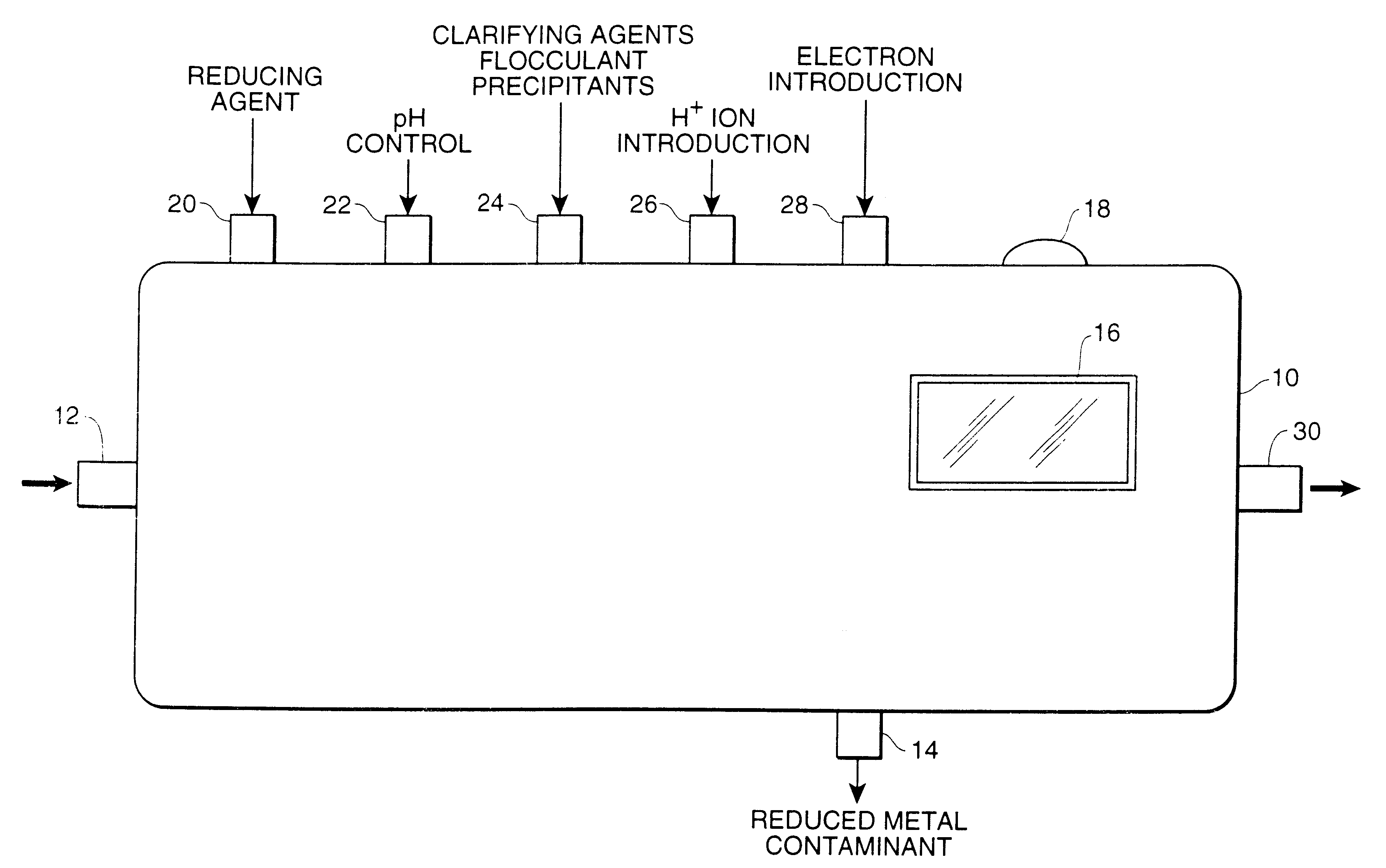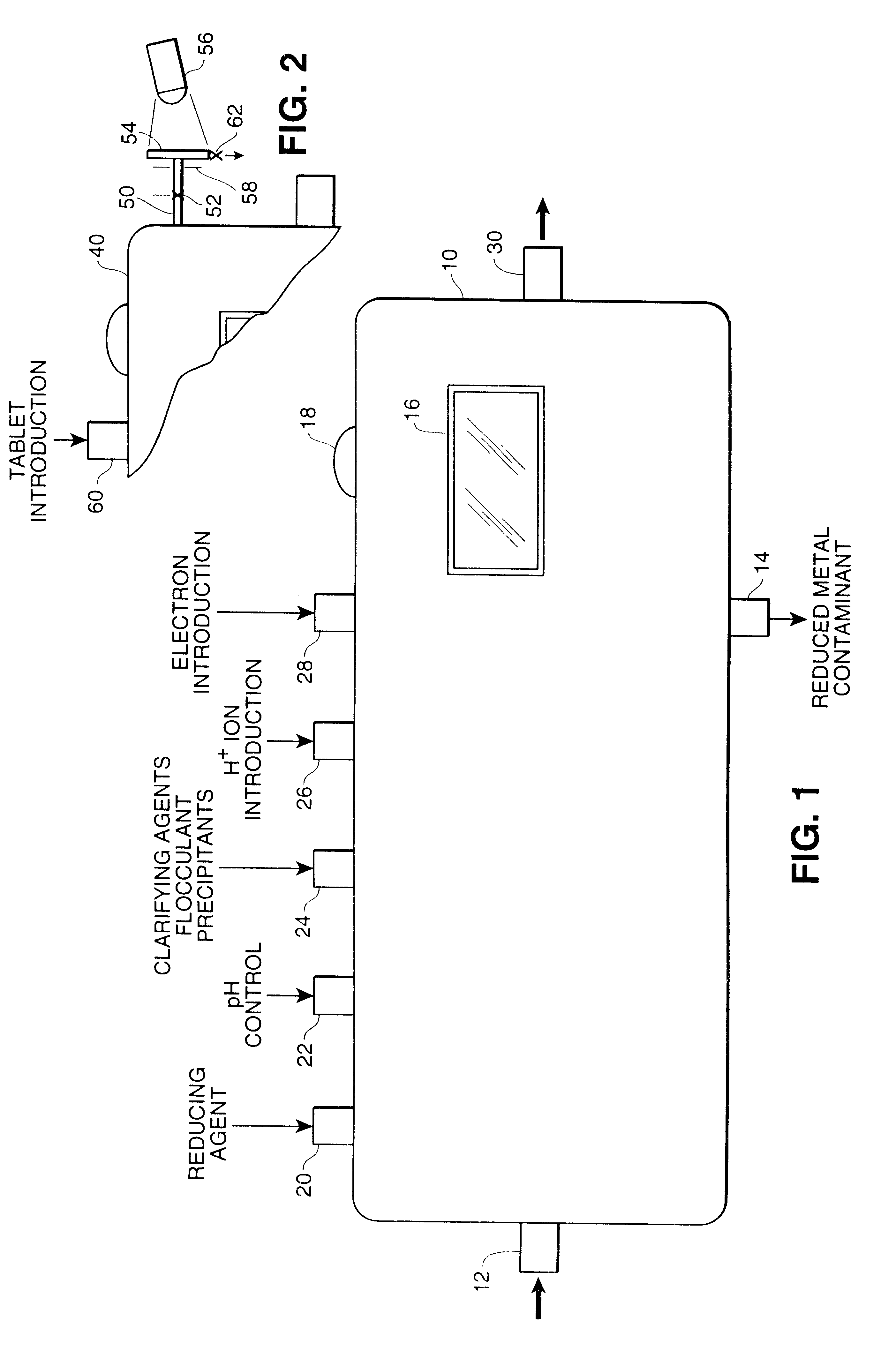Determination of multi-valent metal contamination and system for removal of multi-valent metal contaminants from water
a multi-valent metal and contamination technology, applied in the direction of instruments, other chemical processes, separation processes, etc., can solve the problems of compromising the immune protection system of the body, presenting significant health risks, and severe alterations in cell functions and carcinogenic effects, so as to achieve the effect of easy detection
- Summary
- Abstract
- Description
- Claims
- Application Information
AI Technical Summary
Benefits of technology
Problems solved by technology
Method used
Image
Examples
examples
The invention is further illustrated by, but not limited to, the following examples:
example i
Determination of Hexavalent Chromium in Water with a Ferrous Reductant.
A test of this visual determination was conducted in connection with the reduction of Cr.sup.+6 to Cr.sup.+3 using an Fe.sup.+2 reducing agent with the latter being oxidized in the reaction to Fe.sup.+3. As indicated above, the ferrous ion was ferrous sulfate heptahydrate with a formula weight of 278.01 daltons. The oxidized chromium used for this test was sodium chromate tetrahydrate with a formula weight of 234.06 daltons and the reduced chromium was chromium trichloride with a formula weight of 158.38 daltons.
Approximately 28.35 grams, one ounce, of ferrous sulfate tetrahydrate was diluted in a weight-to-volume measure of 100 milliliters with filtered water. Gentle warming was required to completely dissolve the ferrous sulfate heptahydrate. The original undiluted solution had a very weak greenish yellow color.
A preliminary test with a distinctly green solution of the reduced chromium salt, chromium trichlorid...
example ii
Determination of Hexavalent Chromium in Water with a Cobaltous Reductant.
A test using visual determination was conducted in connection with the reduction of Cr.sup.+6 to Cr.sup.+3 using a Co.sup.+2 reducing agent and with the latter being oxidized in the reaction to Co.sup.+3. As indicated above, the cobaltous acetate tetrahydrate had a weight of 249.08 daltons. The oxidized chromium which was used for this test was sodium chromate tetrahydrate with a formula weight of 234.06 daltons and the reduced chromium was chromium trichloride with a formula weight of 158.38 daltons.
Approximately 28 grams of cobalt acetate tetrahydrate was diluted in a weight-to-volume measure of 100 milliliters with filtered water. Gentle warming was required to completely dissolve the cobalt salt. The original undiluted solution had a red-violet color in water.
A preliminary test with a distinctly green solution of the chromium (Cr III) salt showed no reaction with the cobalt ions and, therefore, following on...
PUM
| Property | Measurement | Unit |
|---|---|---|
| weight | aaaaa | aaaaa |
| weight | aaaaa | aaaaa |
| weight | aaaaa | aaaaa |
Abstract
Description
Claims
Application Information
 Login to View More
Login to View More - R&D
- Intellectual Property
- Life Sciences
- Materials
- Tech Scout
- Unparalleled Data Quality
- Higher Quality Content
- 60% Fewer Hallucinations
Browse by: Latest US Patents, China's latest patents, Technical Efficacy Thesaurus, Application Domain, Technology Topic, Popular Technical Reports.
© 2025 PatSnap. All rights reserved.Legal|Privacy policy|Modern Slavery Act Transparency Statement|Sitemap|About US| Contact US: help@patsnap.com



